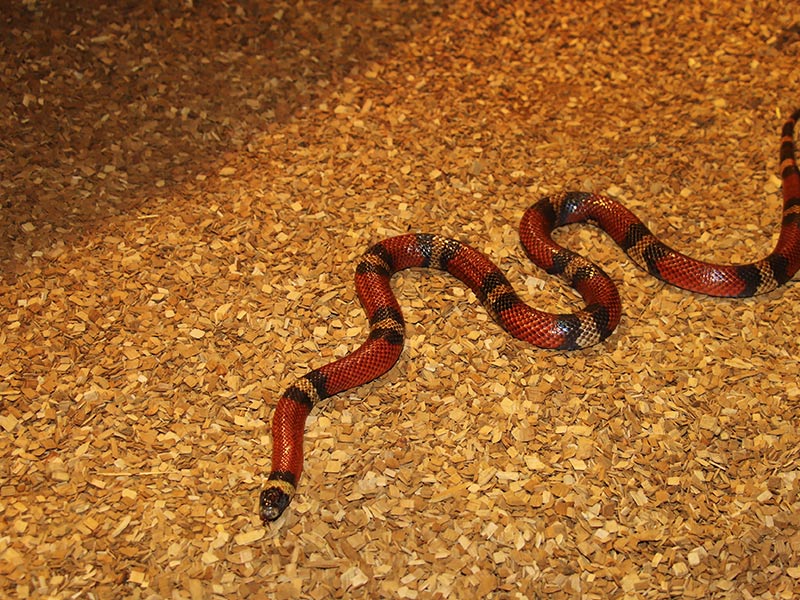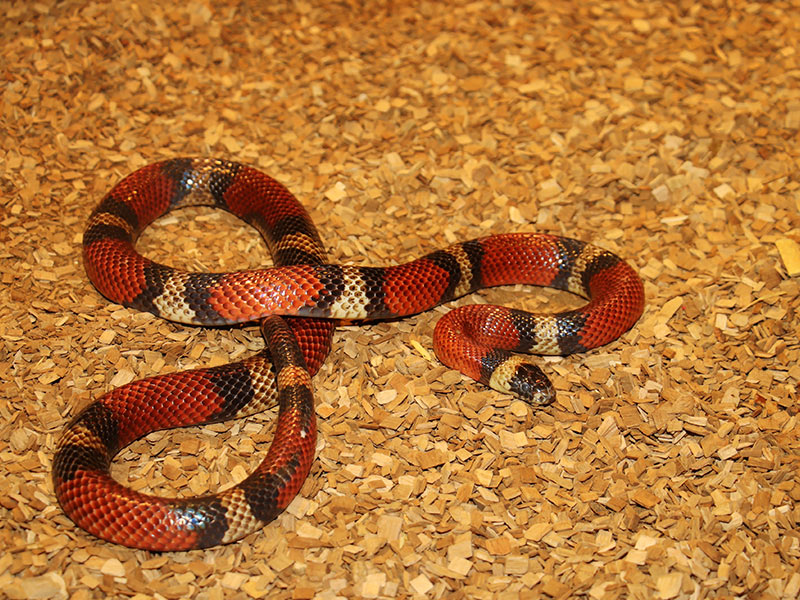Offer 2x1 for a limited time only on this link!


False Coral Snake










The False Coral Snake is found ranging from eastern United States, Mexico and Central America to northwestern South America.
The False Coral can be distinguished from the venomous species by the order of its coloured rings. While the Coral Snake has a white ring alternating between each colour, e.g. red, white, black, white, red, etc., on the False Coral the white is only found between two black rings, e.g. red, black, white, black, red, etc. In addition, on a Coral Snake the white colour is more yellowish than on a False Coral. There is no sexual dimorphism.
It is a mostly nocturnal and solitary species, found only in groups during hibernation. It is not a venomous snake, it kills rather by constriction and defends itself by biting and discharging a foul-smelling fluid from the cloaca. During the day, it usually stays under rocks or fallen leaves, or inside holes. Females build their nests in burrows, under rocks, in tree hollows or in decaying topsoil. Clutches consist of 2 to 17 eggs with a gestation period of 28 to 39 days.
Lampropeltis triangulum is a species that is often killed as many people confuse it with its poisonous twin.